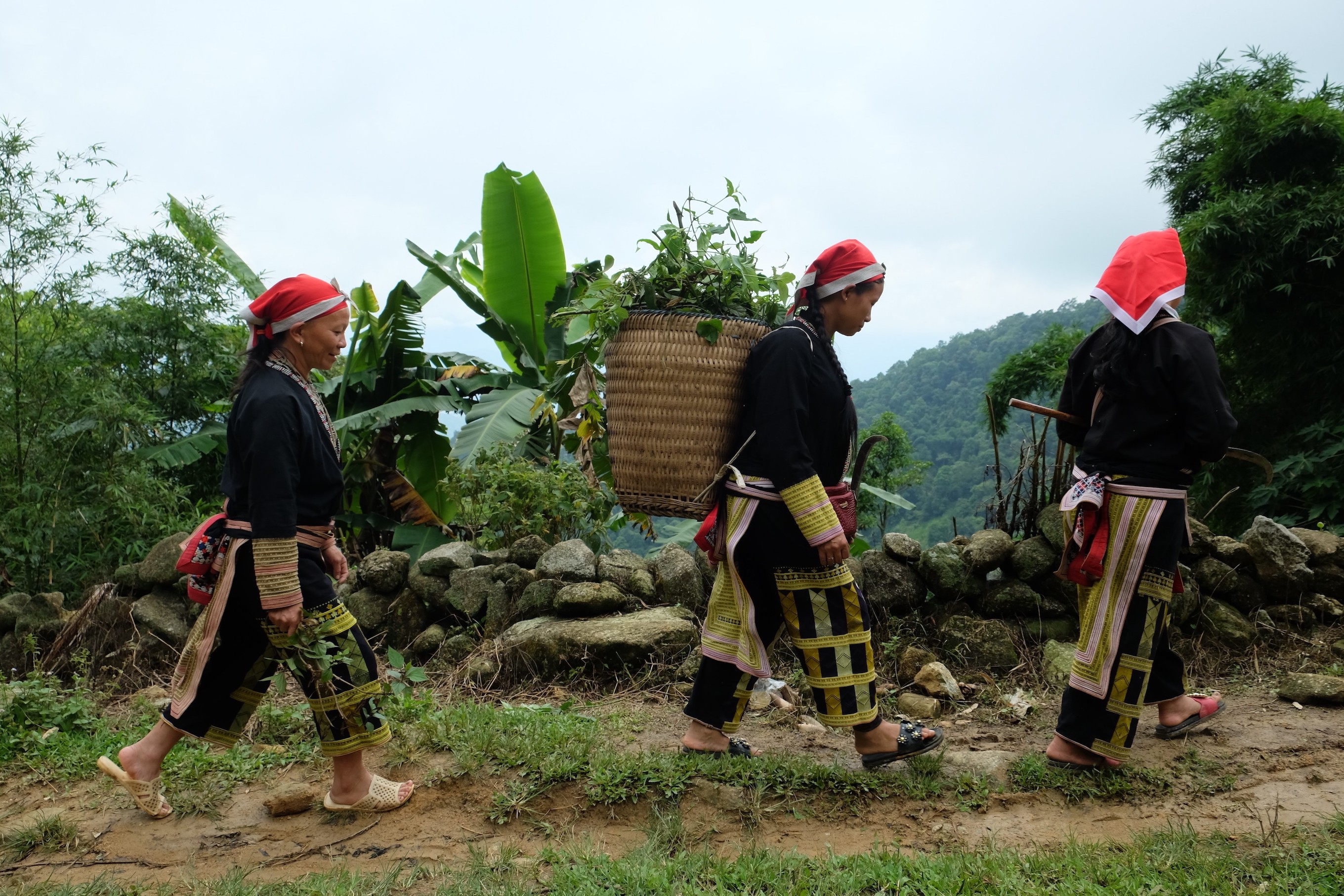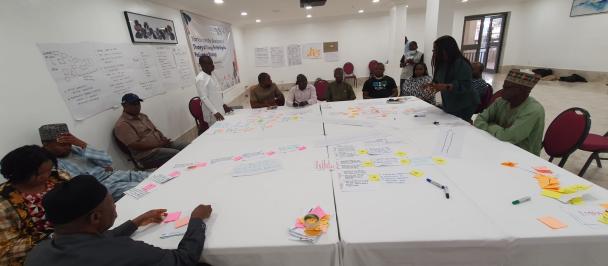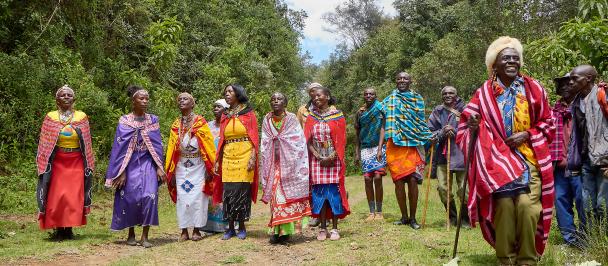Photo: UNDP Viet Nam
Viet Nam’s diverse and vital ecosystems are slowly being pushed to the brink for socioeconomic development. The South-East Asian country possesses over 61,700 different species, including nearly 17,000 terrestrial and aquatic plants, among others. Of these, the high number of endemic species (e.g. about 30% of terrestrial vascular plant species and 4.6% of bird species) distinguishes Viet Nam’s biodiversity. But even as ecosystems like forests, wetlands and marine areas have supercharged the economy and exports, general trends in the last decade are pointing to declining ecosystem health, diversity and productivity. At the launch of Viet Nam’s national ecosystem assessment, hosted by the Sub-Global Assessment Network last month, experts emphasized the urgent need to reconcile biodiversity conservation and ecosystem protection across all economic and social development policies to ensure a sustainable future for Viet Nam.
The assessment, which began in 2018, is the first of its kind in Viet Nam, establishing a sound knowledge and evidence base on biodiversity, building on the global assessments undertaken by the Intergovernmental Science-Policy Platform for Biodiversity and Ecosystem Services. Led by the Center for Biodiversity Conservation under the Vietnam Union of Science and Technology Associations and the Institute of Strategy and Policy for Natural Resources and Environment of the Ministry of Natural Resources and Environment, a multidisciplinary team of 18 authors undertook the assessment with the support of United Nations Environment Programme World Conservation Monitoring Centre’s National Ecosystem Assessment Initiative. This assessment has been carried out with the support of the German Federal Ministry for Environment, Natural Conservation and Nuclear Safety and Consumer Protection through the Biodiversity and Ecosystem Services Network (BES-Net).
Limited public awareness about the importance of ecosystems
Even as the demand for various ecosystem services has steadily increased with population growth in Viet Nam, the assessment highlights that public understanding and awareness about the value of ecosystem services is still quite low. The assessment finds that policy documents rarely capture the concept of ecosystem services, and there is limited research on the evaluation of ecosystem services. The assessments notes, “Biodiversity conservation with some local leaders is a luxury concept, even an obstacle for socioeconomic development.”
Growing pressures on Viet Nam’s ecosystems
The assessment pointed to declining trends in ecosystems that demand urgent coordinated action. Even as forest cover has steadily increased to 41.45% in 2017, the area of primary forests has drastically reduced. With newly planted forests being mostly monoculture, the diversity of forest fauna is much lesser than with primary evergreen tropical forests. Rapid urbanization, industrialization and the establishment of hydroelectric dams along Viet Nam’s rivers, lakes and estuaries are profoundly changing aspects like water flow and sediment quality. The number of lakes has reduced significantly, reservoirs are steadily becoming swamps, and erosion of riverbanks is accelerating. These changes to water bodies are also causing severe damage to the habitats and movements of many native and migratory species of wildlife, including birds and fish that call these river systems their home. Lagoons along Viet Nam’s central coast are degrading due to pollution and chemical run-offs. Coral reefs along the central and southern coasts are showing decreasing levels of live coral coverage, falling prey to worrying trends of destructive fishing, overexploitation, pollution and outbreaks of invasive and predatory species. Peatlands, which are among nature’s most significant forms of carbon storage, are reducing in thickness, and seagrass beds are diminishing.
Dr. Nguyen Si Linh, Policy Expert and Project Officer of Viet Nam’s assessment, speaking at the launch, noted that climate change also plays a critical role in exacerbating these impacts. “When developing four plausible scenarios for how our ecosystems will change, we looked at how climate change and land-use planning will affect different drivers, pressures and impacts and how we need to account for climate change in our response.” All these trends are bound to hurt Viet Nam’s economy in the coming years, given that the agriculture, forestry and fisheries sectors contribute significantly to its exports and gross domestic product.
Payment for ecosystem services
When it comes to financing the management of ecosystems, flagship policies and mechanisms like Viet Nam’s Payment for Forest Environmental Services (PFES) have tried to balance these declining trends with positive and proactive incentives for stakeholders to conserve and manage forests sustainably. In its ten years of implementation, PFES has generated revenues of over VND 16,476 billion (approximately USD 720.6 million) and has eased pressures on state budgets, providing a stable source of finance for forest conservation. This revenue has been used to protect over 6.5 million hectares of forests while providing incomes to over 250,000 households, creating jobs and supporting ethnic minority communities in remote mountainous regions. Along with this steady progress in conserving forests and marine areas to an extent, there is also a real opportunity to do more for wetland conservation in Viet Nam, the assessment finds.
Tapping indigenous knowledge
Viet Nam has 54 diverse ethnic groups with unique languages, cultures and customs, who bring valuable traditional and indigenous knowledge of tree species, wild animals, cultivation, weather patterns and more. This knowledge has translated to many proposed customary laws from communities such as the H’Mong, the Ede and others to protect and conserve environmental resources while outlining individual and community responsibilities. These can provide useful references for strengthening public awareness and legal frameworks to protect and restore ecosystems.
The assessment acknowledges the value of traditional and indigenous knowledge systems in helping conserve ecosystems. Viet Nam has 54 diverse ethnic groups with unique languages, cultures and customs, who bring valuable knowledge of tree species, wild animals, cultivation, weather patterns and more. More than 700 species of plants are used in Vietnamese traditional medicine, including blackcurrant and Crinum latifoliumaceae. This knowledge has translated to many proposed customary laws from communities like the H’Mong, the Ede and others, to protect and conserve environmental resources while outlining individual and community responsibilities. These can provide useful references for strengthening public awareness and legal frameworks to protect and restore ecosystems.
Moving from policy to action
The assessment helps connect scientists to practitioners and policymakers in the country and will play a critical role in informing policymaking, notes Dr. Nguyen The Chinh, Assistant Professor and Director of the Environmental Economic Policy Institute in Viet Nam. The findings from the assessment are currently being used for the formulation of national policies such as the National Strategy on Environment Protection (to 2030 and a vision to 2050) and the National Strategy on Biodiversity Conservation (2021–2030). They are also contributing to Viet Nam’s sixth national report to the UN Convention on Biological Diversity. According to the assessment, despite many laws, policies and strategies for biodiversity in place, enforcement at different levels continues to be a challenge. Lack of resources, limited capacity, overlapping mandates and limited coordination among policy actors are holding back environmental protection at the local level.
The assessment findings will now be shared with different stakeholders, mobilizing support and action to translate its recommendations into policy and practice. To this end, Viet Nam is also one of the first countries to receive the BES Solution Fund, BES-Net’s catalytic fund for implementing tangible, evidence-based, on-the-ground biodiversity solutions. This support will go towards building visibility for the assessment and promoting key findings in decision-making.

 Locations
Locations


